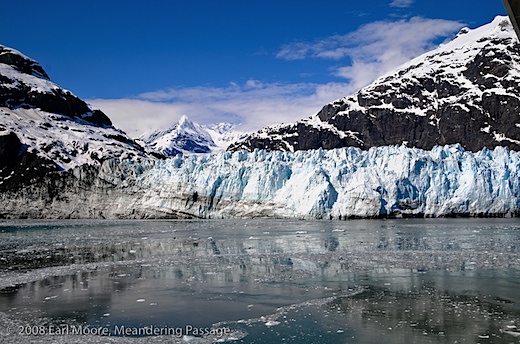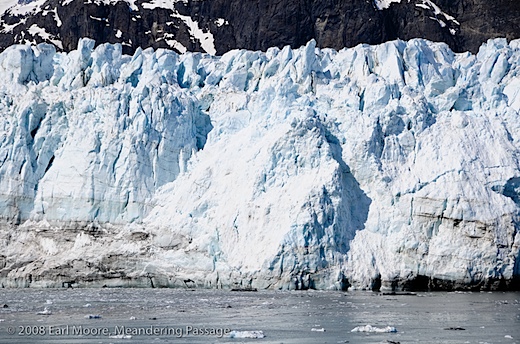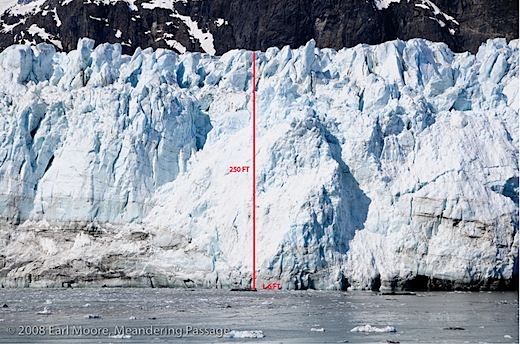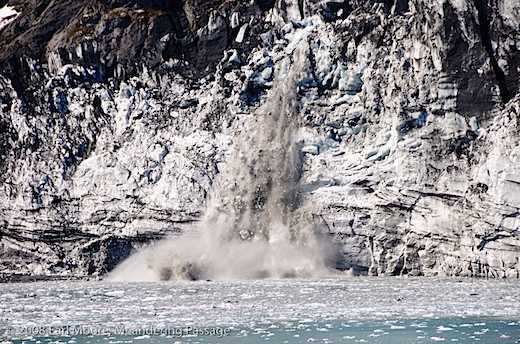Previously I wrote that my sense of scale was off dealing with the grandeur of the Alaskan landscape, resulting in my underestimating size, distance and speed.
Let me give an example of one experience.
The first photo is of the Margerie Glacier in Glacier Bay National Park, Alaska. It was taken with a 26mm focal length (1.4 crop factor = approximately 36mm) from our deck nine balcony. I’m uncertain of the distance from the glacier because my estimates were often wrong.
You can see the glacier continues off the right side of the frame and as I understand it is about a mile wide where it enters the bay.
This second photo below is a closer view of the same glacier face, from near the center of the above photo. It was taken at a focal length of 105mm (1.4 crop factor = 147mm) and perhaps physically a little closer.
You can tell it’s a good size wall of ice which could easily be estimated in the 50~70 feet tall range.
However, according to the park ranger and supporting information I’ve been able to research, this wall of ice rises above the sea between 200 and 250 feet. There’s also another 100 feet below the surface.
On a duplicate photo (see below), I’ve marked a scale to indicate the size of a 6 ft tall man against this backdrop. Yes, it’s that tiny little mark just to the right of the reference 250 ft line.
I would appear about as tall as that mark if I stood at foot of this tremendous wall.
Of course the landscape was extremely impressive under any circumstances, but there was nothing that accurately conveyed the true scale of what we were seeing.
I’m now viewing some of my photos from Alaska with a fresh view. For example, what I thought at the time was a small iceberg calving event (see photo below) was actually 80-100 feet of ice breaking away.
Perhaps it’s just as well I didn’t comprehend the true scale, I might not have been able to close my mouth and stop staring long enough to get any decent shots. ;-)
Discover more from Meandering Passage
Subscribe to get the latest posts sent to your email.




